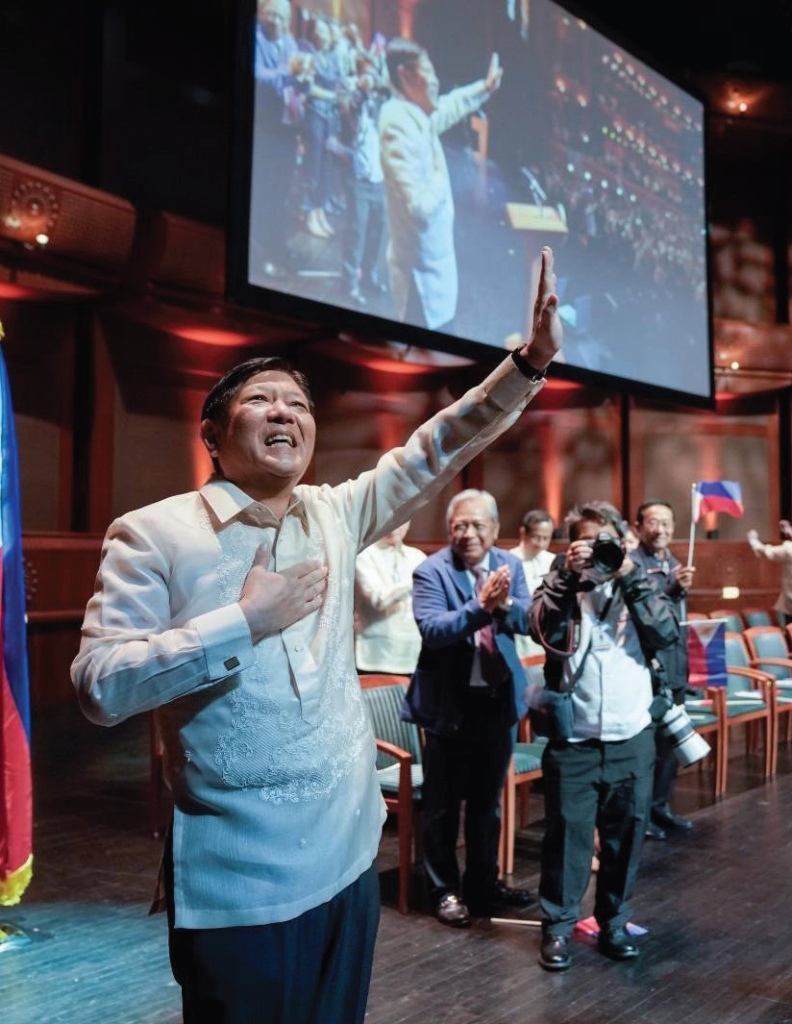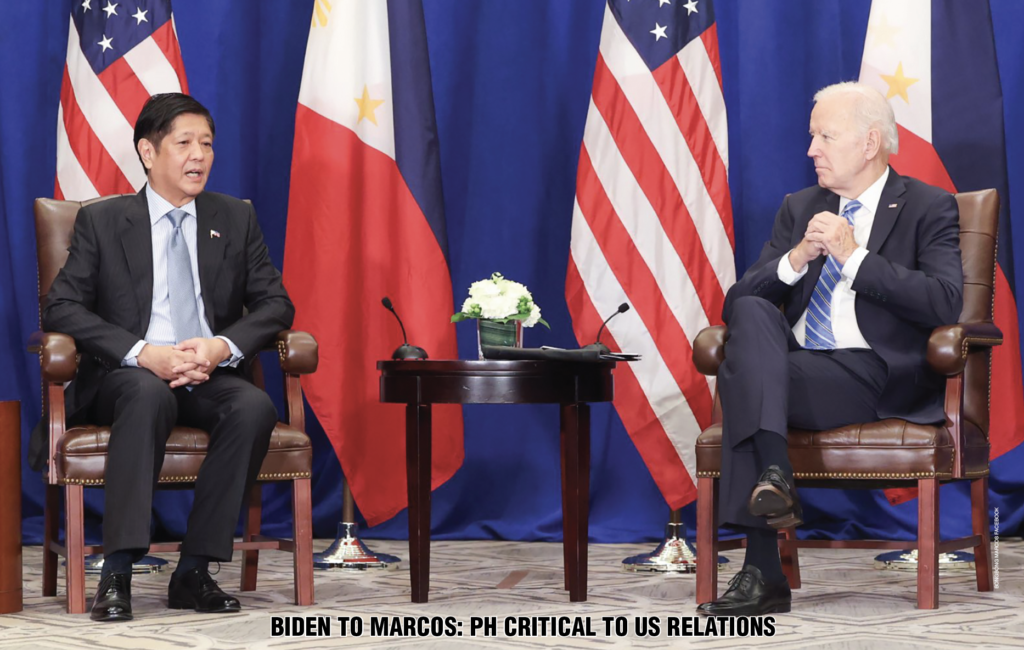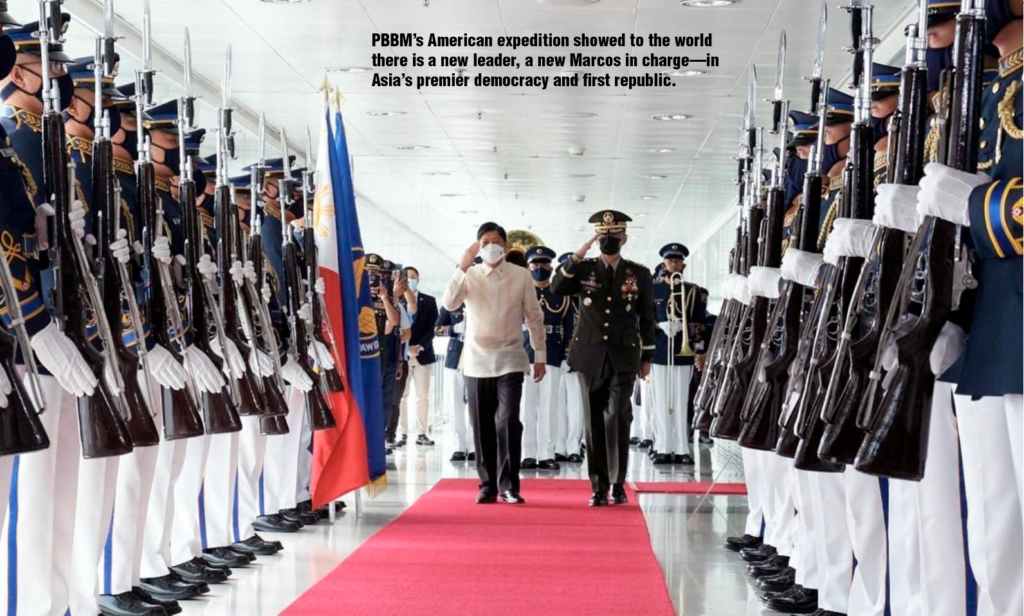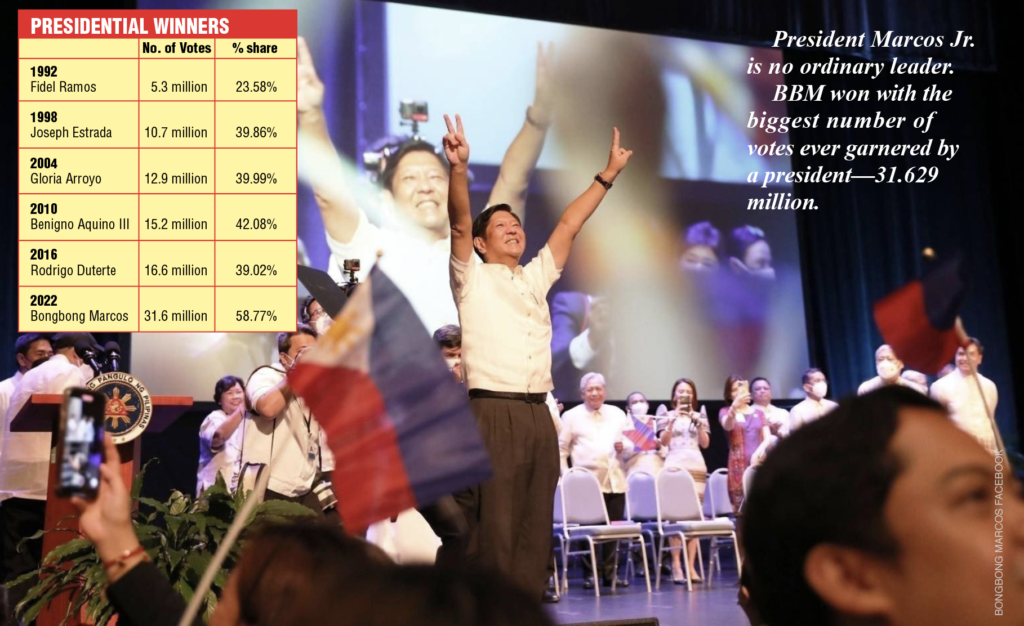By Antonio S. Lopez
The week-long (Sept. 18-24, 2022) working visit of President Ferdinand Romualdez Marcos Jr. to the United States goes down in history as one of the most significant ever made by any Philippine leader. For a number of reasons.
One, the trip reaffirmed the longstanding warm, strong and enduring relations between the Philippines and America that go back 124 years.
Relations with US strengthened
“We are partners, we are allies, we are friends,” Marcos told President Biden in a brief but friendly sit-down tete-a-tete. Assured the US leader: “The relationship between the United States and the Philippines has very deep roots. We’ve had some rocky times, but the fact is it’s a critical relationship, from our perspective. I hope you feel the same way.” “For decades, the alliance has strengthened both of us,” Biden stressed.
Two, it “introduced”, to use President BBM’s own word, the Philippines to the world, a nation back on its feet from the most debilitating pandemic and economic slump of the last 100 years, a country ready to reclaim its destiny and march in cadence in dynamism and growth of Asia’s prospering nations.
The President met with the leaders of the United States, Japan and the UK, and with United Nations Secretary General Antonio Guterres.
“I shared with them the priorities of the Philippines to work with them in addressing food and energy security, and climate change, amongst other many issues. Our discussions were very productive, and the members of the Cabinet will now work to operationalize the many areas of cooperation that we identified,” Marcos told his countrymen upon his return to Manila early morning of Sunday, Sept. 25.

A brighter future for our people
At the world body’s 77th General Assembly on Sept. 22, 2022, President Marcos “articulated the role we see for the Philippines’ working with the UN in building a brighter future for our people and a safer and more just world for us all. I addressed global issues that require a united global action, such as climate change, rising food prices, rapid technological change, the peaceful resolution of international disputes, the need to protect the vulnerable sectors of our society such as migrants, and ending all forms of prejudice.”
Also, the President said, “I reiterated the Philippines’ belief in the primacy of the rule of law, as embodied by the UN Convention on the Law of the Sea or UNCLOS.”

Three, Marcos Jr. announced that the Philippines is open for business. Business taxes have been lowered, steps to start up a business have been reduced, sectors once closed to foreign investors have been opened, and government and private CEOs have teamed up to attract investments, build more infra, modernize the economy, and meet the growing needs of 114 million Filipinos—the largest consumer market on earth and the 33rd largest economy in the world.
“I had one singular message: The time to invest in the Philippines is no longer just some time in the future–it is now,” the President declared.
Optimism
The President saw buoyant optimism during his meetings with US investors and businessmen:
“Together, we will be working on addressing some of our key economic challenges, particularly once again climate change, food security, and energy security, to name but a few. There will be, I believe, good news to share in the next few months, particularly in terms of their plans to expand and further broaden their investment.”
Marcos’s delegation hosted four CEO roundtable discussions that dealt with key economic sectors, such as IT-BPM, digital infrastructure, global brands particularly in garments and apparel, and of course, industry and infrastructure.
“I was joined by the economic managers and other Cabinet members in brainstorming with these US companies, some already present and others intending to be in the Philippines,” the President related.
Pinoy-Americans tapped
Four, the President conveyed a desire to tap the goodwill and money of the more than four million Filipino expats in the US to send more money and invest this in homes and other financial assets, in their home country and thus add fillip to the Philippines’ vast economic transformation.
“Working together, we can build a better future for our country and our people,” Marcos Jr. told Filipino-Americans in New Jersey. The expats remit annually to the Philippines $7 billion, a fifth of the $32 billion remittances of OFWs to their home country.
A new leader in Asia
Five, the President’s American expedition showed the world there is a new leader, a new Marcos in charge—of Asia’s premier democracy and first republic.
That leader is one who is decent, well educated, warm and gentle in manners, imbued with age-old values of freedom, democratic dialogue, respect for human rights, and steeped in the discipline of excellence, globalization, modernization, and technological innovation, all of which he seeks to harness for the betterment of his people and country.
Magellan and Lapu-Lapu
The Philippines’ first contact with the world was in 1521, 501 years ago when the expedition was led by the Portuguese Ferdinand Magellan who was financed by the King of Spain.
Magellan in Mactan
Initially, Magellan made friends with some of the chieftains in the Visayas before he stumbled into a fiefdom headed by Lapu-Lapu. The Mactan ruler dealt Magellan with a crippling defeat, killed him on the spot (the invader’s body, as well as his huge wooden cross, was never found), and let the world know that in this part of the world Filipinos would defy subjugation and slavery.
In the 16th century, Spain was the greatest naval power and had the most modern weapons of war. Magellan’s defeat thus is the equivalent of the US Seventh Fleet being humbled on the beaches of Mactan by the natives using weapons no more modern than bows and arrows.
A good start
Marcos summed up his trip thus: “We in the Philippine delegation are one in our assessment that the work done in this trip serves as a good start for opportunities identified to be made into programs and projects to benefit the Philippines and our countrymen.
“And so, the work continues but I am happy to report that we have had a very good and strong start to our efforts.”
BBM’s victory unified the north, central and southern Philippines. Truly, he is the first unity Filipino president. There is no precedent for such an awesome mandate in the 124 years of the Republic

The Marcos coalition also handily captured Congress. In effect, the Philippines has a virtual parliamentary system because the powers of two branches –the Executive’s and the Legislature’s—have practically merged. This should pave the way for smooth sailing for the administration’s economic and social reform programs.

No ordinary leader
President Marcos Jr., 65, is no ordinary leader.
In May 2022, BBM won with the biggest number of votes ever garnered by a president—31.629 million. Previously, his predecessors from 1992 were elected with just five to 16 million votes, with hairline margins and much smaller percentages of votes cast for a winning president.
Marcos took 59% of the 53.8 million votes cast for president; only his father and namesake Ferdinand Edralin Marcos Sr. had a larger share, 61% when he won reelection in 1969.
BBM’s 59% share of the vote was nearly three times the 21.5 million total votes of his four nearest rivals – Leni Robredo, Manny Pacquiao, Isko Moreno, and Panfilo Lacson. The four garnered together just 40% of the total votes cast for president, 48% lower than Marcos’s 59% commanding share.
Marcos convincingly trounced the main opposition candidate Robredo (15 million votes or 27.9%) who was backed by the Catholic Church, Big Business, and by remnants of the so-called Yellow backers of the two Aquino presidencies—Corazon Aquino (1986-1992) and Benigno Simeon Aquino III (2010-2016).
BBM’s victory unified the north, central and southern Philippines. Truly, he is the first unity Filipino president. There is no precedent for such an awesome mandate in the 124 years of the Republic. The Marcos coalition also handily captured Congress. There are only three known opposition members in the 311-member House of Representatives, and virtually one in the 24-member Senate. In effect, the Philippines has a virtual parliamentary system because the powers of two branches –the Executive’s and the Legislature’s—have practically merged. This should pave the way for smooth sailing for the administration’s economic and social reform programs.
